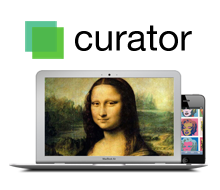9 Things to include in your museum's digital engagement strategy

The Web sites of museums are different in a number of important ways. In order to manage your site and your online presence effectively, it’s important to understand those differences and play to your strengths. Here are some things worth considering:
-
A museum Web site needs to be consistent with your overall visitor experience
Most potential patrons, whether they live in your community or are tourist in town looking for a little cultural recreation, will see your Web site before they ever set foot in your facility. Your site needs to set the right tone and should dovetail seamlessly with the overall visitor experience you’re trying to create in your physical space. Make sure people can easily find information they need to plan a visit, and of course show off your exhibits and collection - the reason why they'd show up.
-
Go mobile. Now.
What's one of the most popular activities for people visiting a new city? Visiting a museum. Tourists are often "in the moment" and will often whip out their smartphones to find something to do nearby. If your museum website is optimized for mobile (both layout and content) you'll be at an advantage over other potential venues that aren't.
-
Leverage Social Media
Museums have tremendous advantages they can exploit in the realm of social media. Pound for pound, they have some of the largest Facebook fan numbers of any organization in their communities. Use them as your ambassadors to connect with the wider community, engage with new potential members, promote development campaigns as well as promote exhibitions. See how you compare at Museum Analytics.
-
Enhance exhibitions with mobile apps
While patrons are touring your exhibits, use mobile apps to increase the amount of information available to them and enhance the experience. Sometimes this is called "augmented reality". For example, a QR code could take them to a Web page with related information that wouldn't fit into the physical space. And audio tours - where people have to dial a number - are much slower and are becoming outdated with the rise of smartphones.
-
Optimize your site so people can find you through notable objects in your collection
People doing online research on artistic or cultural items of significance in your collection should be able to find them – and discover your website – through a simple Web search. Engage in search engine optimization of your collection, starting with the most important objects; next, work on optimizing exhibits. If possible, use a content management system that let's you create landing pages for artists, and preferably name them. "/collection/warhol/campbell-soup" is much more search engine friendly than "/index.php?section_id=21" (not to mention easier to remember).
-
Effectively incorporate your site into your marketing and development strategies
For some museums, a website is still a place where content is shoveled without much thought given to effectively using it to advance the mission of the institution. This is a tremendous missed opportunity. Make sure your site, especially your home page, has strong calls to action for each key audience. That means you understand who your online audience is (hint: it could be different from the audience that walks through the doors). Implement a flexible content management system that allows non-technical communicators on your staff to update the home page quickly and easily as events warrant.
-
Keep up with trends in user interface design to connect with a younger audience
Savvy internet users who are comfortable with the latest user experience idioms, social media sites like Facebook and Twitter, and mobile devices and tablets, have certain (high) expectations when they visit your site. Hire a staff that can keep up with the trends or work with an interactive agency partner who can do it for you. It’ll help you build a stronger connection with the digerati.
-
Augment your exhibits with online-only features that are enticing
The Web is a great place to extend your exhibitions. Work with your interactive partner or in-house team to create features that supplement the on-site exhibits and give people a reason to come to your facility to experience the exhibit in person.
-
Understand who on your staff will update the site after a relaunch
Many museum Web sites fail after a redesign because very little planning was done to ensure the effective day-to-day management of the site post-launch. Understand who will be maintaining the content on the site - Marketing? IT? Also keep in mind the number of people available to manage the site and of course their capabilities.

